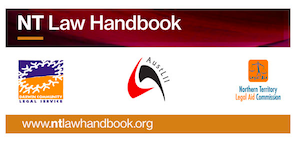-- JonathanMo - 14 Sep 2015
Difficult areas for patentability
Schemes, methods and systems
A mere improved method of doing something will not, by itself, be a 'manner of manufacture'. In Rolls-Royce Ltd's Application (1963) RPC 251 (UK Patents Appeal Tribunal), the court read the patent specification in suit as a disclosure of a general flight plan directing the initial operational movements of an aircraft between take-off and the commencement of free flying conditions. However, more recently the courts have allowed patents for improved business methods such as a process of operating smart cards in connection with traders' loyalty schemes: see Welcome Real-Time SA v Catuity Inc [2001] FCA 445; (2001) 51 IPR 327.Methods of packaging and presentation of goods
In Wellcome Foundation Ltd v Commissioner of Patents [1980] HCA 21; (1980) 145 CLR 520, the High Court held that for there to be novelty in a package claim there must be an interaction between the container with its contents and the writing so that the instructions or directions are novel by virtue of their link with the process. The claim succeeded because the instructions indicated that the pills were to be taken in a certain sequence, the sequence being part of the inventive improvement.Computer software
Computer software is generally protected under copyright law as literary or artistic works, and does not normally fit the prescription for patent protection. However, in IBM Corporation v Commissioner for Patents [1991] FCA 625; (1991) 22 IPR 417 it was held that the application of the selected mathematical methods to computers, and in particular, to the production of the desired curve by computer constituted a patentable process. This approach was affirmed by the Full Federal Court in CCOM Pty Ltd v Jiejing Pty Ltd [1994] FCA 396; (1994) 51 FCR 260; 28 IPR 481. The Patent Office Manual of Practice and Procedure - National of March 2002 accepts that a computer software-related invention is patentable if the invention allows for 'an artificially created state of affairs of utility in the field of economic endeavour'.Biotechnology
The question of whether biotechnology, or a use for natural or engineered living organisms, is patentable poses some difficult legal and ethical questions. In a UK case, American Cyanamid v Berk Pharmaceuticals (1976) RPC 231, the claim was for a biochemical process which utilised strains of a micro-organism for the production of the antibiotic tetracycline in almost pure form. This was seen as more than a mere 'discovery', since the micro-organisms had to be 'transferred to some appropriate medium, selected, mutated, re-selected and so on, before they produce any, still less any appreciable, quantity of antibiotic'. See the United States case of Diamond v Chakrabarty [1980] USSC 119; (1980) 447 US 303, as the benchmark case for the grant of patents for living organisms and their products. The case established a distinction between an unpatentable product of nature and a patentable product derived from nature. See also the Patent Office Practice Note, 'Patent Applications concerned with Living Organisms', which states that:The criteria to be met before an application concerned with living organisms will be accepted are precisely the same as those for any other application, that is, no distinction is to be made solely on the basis that a claimed product or process is, or contains or uses, a living organism. Higher life forms will not be treated any differently from lower forms such as micro-organisms.
The 'therapeutic treatment' exception
There is a traditional reluctance in patent law to allow patents for methods of treatment of disease in humans. See Rescare Ltd v Anaesthetic Supplies Pty Ltd (1992) 111 ALR 205 at 234, on appeal at [1994] FCA 1065; (1994) 50 FCR 1; 28 IPR 383, 122 ALR 141. On appeal, the majority of the Full Federal Court held that there was nothing in the PA specifically excluding the grant of a patent for a method of medical treatment, but that Parliament should make any decision as to whether this type of treatment from patentability should be excluded from patentability. See also Joos v Commissioner of Patents [1972] HCA 38; (1972) 126 CLR 611. The issue of patents for methods of medical treatment was discussed at length in Bristol-Myers Squibb Co v F H Faulding and Co Ltd (1998) 41 IPR 467, and on appeal to the Full Federal Court at [2000] FCA 316; (2000) 170 ALR 439. Finkelstein J said that:I do not believe that in a controversial issue such as is raised by the present argument, I would be abandoning my responsibility as a judge to ... hold that if public policy demands that a medical or surgical process should be excluded from patentability, then that is a matter that should be resolved by the Parliament.
 Copyright © by the contributing authors. All material on this collaboration platform is the property of the contributing authors.
Copyright © by the contributing authors. All material on this collaboration platform is the property of the contributing authors. Ideas, requests, problems regarding AustLII Communities? Send feedback
This website is using cookies. More info.
That's Fine

